US Airways 2004 Annual Report Download - page 31
Download and view the complete annual report
Please find page 31 of the 2004 US Airways annual report below. You can navigate through the pages in the report by either clicking on the pages listed below, or by using the keyword search tool below to find specific information within the annual report.-
 1
1 -
 2
2 -
 3
3 -
 4
4 -
 5
5 -
 6
6 -
 7
7 -
 8
8 -
 9
9 -
 10
10 -
 11
11 -
 12
12 -
 13
13 -
 14
14 -
 15
15 -
 16
16 -
 17
17 -
 18
18 -
 19
19 -
 20
20 -
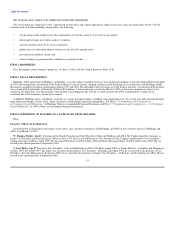 21
21 -
 22
22 -
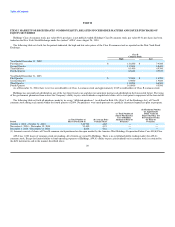 23
23 -
 24
24 -
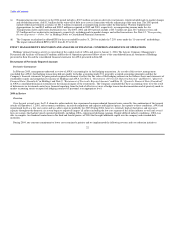 25
25 -
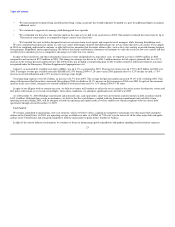 26
26 -
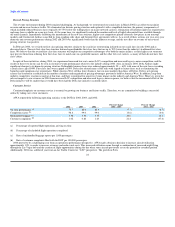 27
27 -
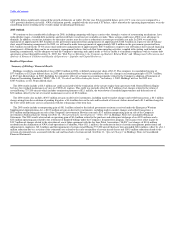 28
28 -
 29
29 -
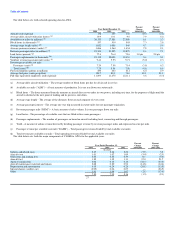 30
30 -
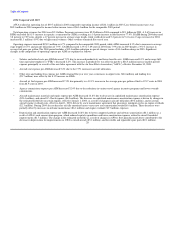 31
31 -
 32
32 -
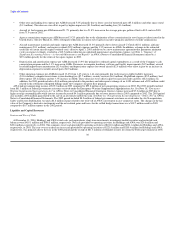 33
33 -
 34
34 -
 35
35 -
 36
36 -
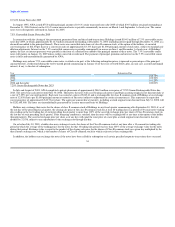 37
37 -
 38
38 -
 39
39 -
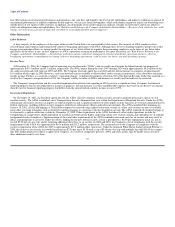 40
40 -
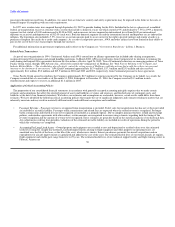 41
41 -
 42
42 -
 43
43 -
 44
44 -
 45
45 -
 46
46 -
 47
47 -
 48
48 -
 49
49 -
 50
50 -
 51
51 -
 52
52 -
 53
53 -
 54
54 -
 55
55 -
 56
56 -
 57
57 -
 58
58 -
 59
59 -
 60
60 -
 61
61 -
 62
62 -
 63
63 -
 64
64 -
 65
65 -
 66
66 -
 67
67 -
 68
68 -
 69
69 -
 70
70 -
 71
71 -
 72
72 -
 73
73 -
 74
74 -
 75
75 -
 76
76 -
 77
77 -
 78
78 -
 79
79 -
 80
80 -
 81
81 -
 82
82 -
 83
83 -
 84
84 -
 85
85 -
 86
86 -
 87
87 -
 88
88 -
 89
89 -
 90
90 -
 91
91 -
 92
92 -
 93
93 -
 94
94 -
 95
95 -
 96
96 -
 97
97 -
 98
98 -
 99
99 -
 100
100 -
 101
101 -
 102
102 -
 103
103 -
 104
104 -
 105
105 -
 106
106 -
 107
107 -
 108
108 -
 109
109 -
 110
110 -
 111
111 -
 112
112 -
 113
113 -
 114
114 -
 115
115 -
 116
116 -
 117
117 -
 118
118 -
 119
119 -
 120
120 -
 121
121 -
 122
122 -
 123
123 -
 124
124 -
 125
125 -
 126
126 -
 127
127 -
 128
128 -
 129
129 -
 130
130 -
 131
131 -
 132
132 -
 133
133 -
 134
134 -
 135
135 -
 136
136 -
 137
137 -
 138
138 -
 139
139 -
 140
140 -
 141
141 -
 142
142 -
 143
143 -
 144
144 -
 145
145 -
 146
146 -
 147
147 -
 148
148 -
 149
149 -
 150
150 -
 151
151 -
 152
152 -
 153
153 -
 154
154 -
 155
155 -
 156
156 -
 157
157 -
 158
158 -
 159
159 -
 160
160 -
 161
161 -
 162
162 -
 163
163 -
 164
164 -
 165
165 -
 166
166 -
 167
167 -
 168
168 -
 169
169 -
 170
170 -
 171
171 -
 172
172 -
 173
173 -
 174
174 -
 175
175 -
 176
176 -
 177
177 -
 178
178 -
 179
179 -
 180
180 -
 181
181 -
 182
182 -
 183
183 -
 184
184 -
 185
185 -
 186
186 -
 187
187 -
 188
188 -
 189
189 -
 190
190 -
 191
191 -
 192
192 -
 193
193 -
 194
194 -
 195
195 -
 196
196 -
 197
197 -
 198
198 -
 199
199 -
 200
200 -
 201
201 -
 202
202 -
 203
203 -
 204
204 -
 205
205 -
 206
206 -
 207
207 -
 208
208 -
 209
209 -
 210
210 -
 211
211 -
 212
212 -
 213
213 -
 214
214 -
 215
215 -
 216
216 -
 217
217 -
 218
218 -
 219
219 -
 220
220 -
 221
221 -
 222
222 -
 223
223 -
 224
224 -
 225
225 -
 226
226 -
 227
227 -
 228
228 -
 229
229 -
 230
230 -
 231
231 -
 232
232 -
 233
233 -
 234
234 -
 235
235 -
 236
236 -
 237
237 -
 238
238 -
 239
239 -
 240
240 -
 241
241 -
 242
242 -
 243
243 -
 244
244 -
 245
245 -
 246
246 -
 247
247 -
 248
248 -
 249
249 -
 250
250 -
 251
251 -
 252
252 -
 253
253 -
 254
254 -
 255
255 -
 256
256 -
 257
257 -
 258
258 -
 259
259 -
 260
260 -
 261
261 -
 262
262 -
 263
263 -
 264
264 -
 265
265 -
 266
266 -
 267
267 -
 268
268 -
 269
269 -
 270
270 -
 271
271 -
 272
272 -
 273
273 -
 274
274 -
 275
275 -
 276
276 -
 277
277 -
 278
278 -
 279
279 -
 280
280 -
 281
281 -
 282
282 -
 283
283 -
 284
284 -
 285
285 -
 286
286 -
 287
287 -
 288
288 -
 289
289 -
 290
290 -
 291
291 -
 292
292 -
 293
293 -
 294
294 -
 295
295 -
 296
296 -
 297
297 -
 298
298 -
 299
299 -
 300
300 -
 301
301 -
 302
302 -
 303
303 -
 304
304 -
 305
305 -
 306
306 -
 307
307 -
 308
308 -
 309
309 -
 310
310 -
 311
311 -
 312
312 -
 313
313 -
 314
314 -
 315
315 -
 316
316 -
 317
317 -
 318
318 -
 319
319 -
 320
320 -
 321
321 -
 322
322 -
 323
323 -
 324
324 -
 325
325 -
 326
326 -
 327
327 -
 328
328 -
 329
329 -
 330
330 -
 331
331 -
 332
332 -
 333
333 -
 334
334 -
 335
335 -
 336
336 -
 337
337 -
 338
338 -
 339
339 -
 340
340 -
 341
341 -
 342
342 -
 343
343 -
 344
344 -
 345
345 -
 346
346
 |
 |

Table of Contents
2004 Compared with 2003
AWA realized an operating loss of $39.7 million in 2004 compared to operating income of $26.1 million in 2003. Loss before income taxes was
$85.3 million in 2004 compared to income before income taxes of $61.4 million for the comparable 2003 period.
Total operating revenues for 2004 were $2.3 billion. Passenger revenues were $2.2 billion in 2004 compared to $2.1 billion in 2003. A 9.6% increase in
RPMs exceeded an 8.1% increase in capacity, as measured by ASMs, resulting in a 1.0 point increase in load factor to 77.4%. RASM during 2004 decreased
3.8 percent to 7.29 cents, despite a 4.7 percent increase in average stage length, while yields decreased 5.2 percent to 9.41 cents. Cargo revenues for 2004
increased $1.3 million (4.9%) due to higher mail volumes. Other revenues remained flat year of year.
Operating expenses increased $150.3 million or 6.7% compared to the comparable 2003 period, while ASMs increased 8.1% due to increases in average
stage length of 4.7% and aircraft utilization of 7.9%. CASM decreased 1.3% to 7.89 cents in 2004 from 7.99 cents in 2003 despite a 39.1% increase in
average fuel price per gallon. The 2004 period includes a $15.4 million reduction in special charges versus a $14.4 million charge in 2003. Significant
changes in the components of operating expense per ASM are explained as follows:
• Salaries and related costs per ASM decreased 7.9% due to increased productivity and lower benefit costs. ASMs increased 8.1% and average full-
time equivalent employees ("FTEs") decreased 2.2%. This increase in productivity was offset in part by a $26.5 million increase in pilot payroll
expense principally as a result of the new labor agreement with the Air Line Pilots Association ("ALPA") effective December 30, 2003.
• Aircraft rent expense per ASM decreased 5.4% due to the 7.9% increase in aircraft utilization.
• Other rents and landing fees expense per ASM remained flat year over year as increases in airport rents ($6.6 million) and landing fees
($5.7 million) were offset by the 8.1% increase in ASMs.
• Aircraft jet fuel expense per ASM increased 37.0% due primarily to a 39.1% increase in the average price per gallon of fuel to 123.7 cents in 2004
from 88.9 cents in 2003.
• Agency commissions expense per ASM decreased 32.4% due to the reductions in various travel agency incentive programs and lower override
commissions.
• Aircraft maintenance materials and repair expense per ASM decreased 14.8% due to decreases in capitalized maintenance amortization expense
($23.4 million), and aircraft C-Check expense ($4.0 million). The decrease in capitalized maintenance amortization expense is driven by changes in
the estimated useful life on certain engines, effective January 1, 2004, as a result of changes in aircraft utilization ($9.2 million), and on certain
aircraft engine overhaul costs, effective April 1, 2003, driven by a new maintenance agreement that guarantees minimum cycles on engine overhauls
($2.3 million). During 2004, the net decrease of fully amortized assets versus new asset amortization totaled $6.6 million. These decreases were
partially offset by increases in airframe maintenance ($6.1 million) and engine overhaul ($3.7 million) expenses.
• Depreciation and amortization expense per ASM decreased 24.8% due to lower computer hardware and software amortization ($6.1 million) as a
result of AWA's cash conservation program, which reduced capital expenditures and lower amortization expenses related to aircraft leasehold
improvements ($1.7 million). The change in the estimated useful life as a result of changes in AWA's fleet plan discussed above contributed to the
decrease in depreciation for improvements on AWA's owned aircraft ($3.1 million), and for rotable and repairable spare parts ($2.1 million).
28
